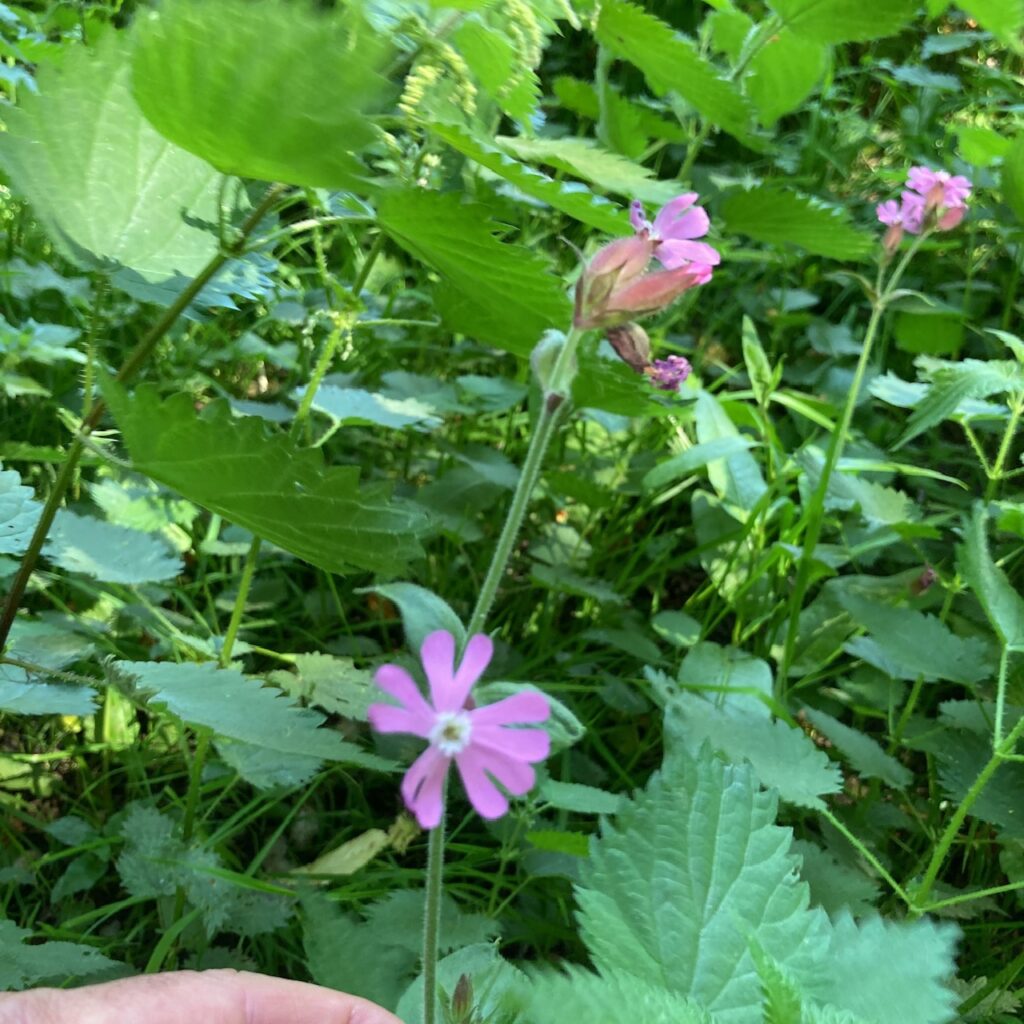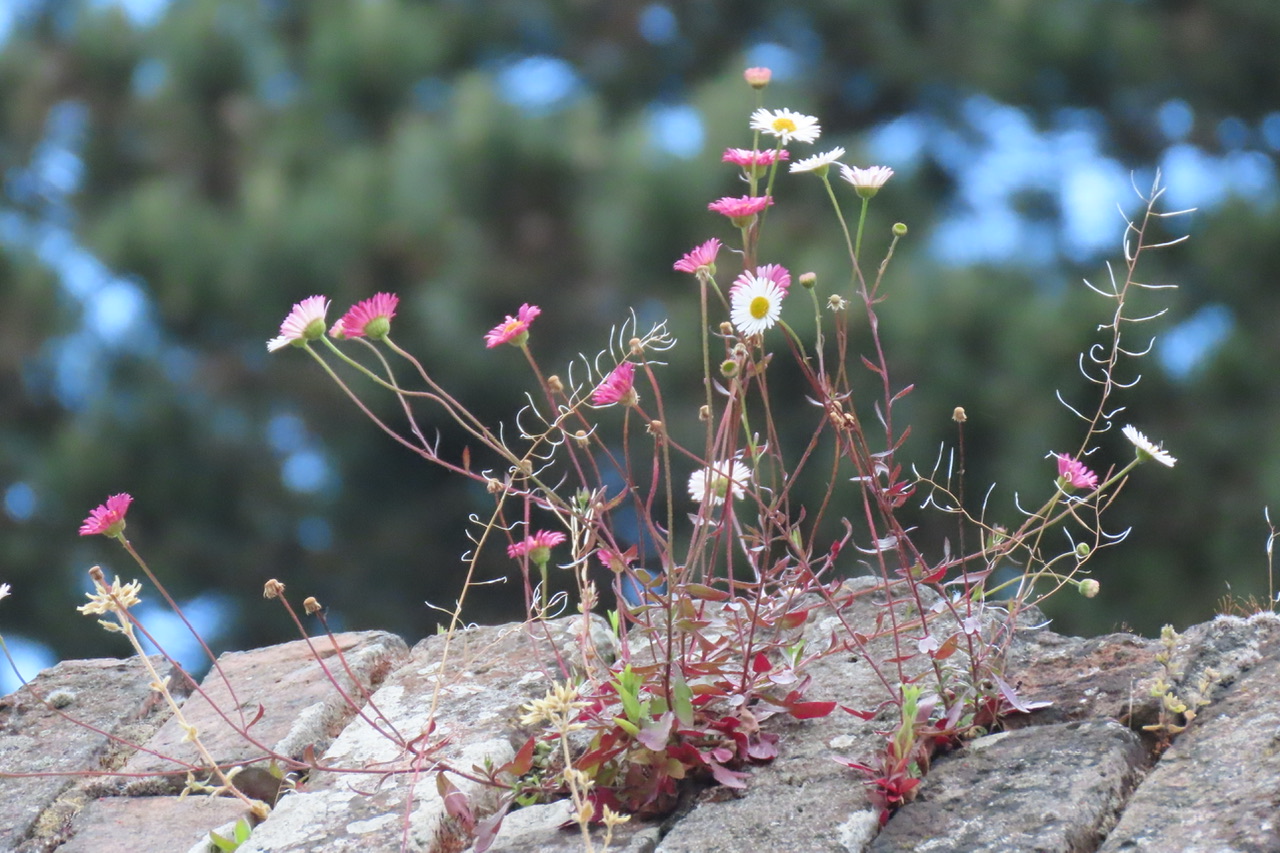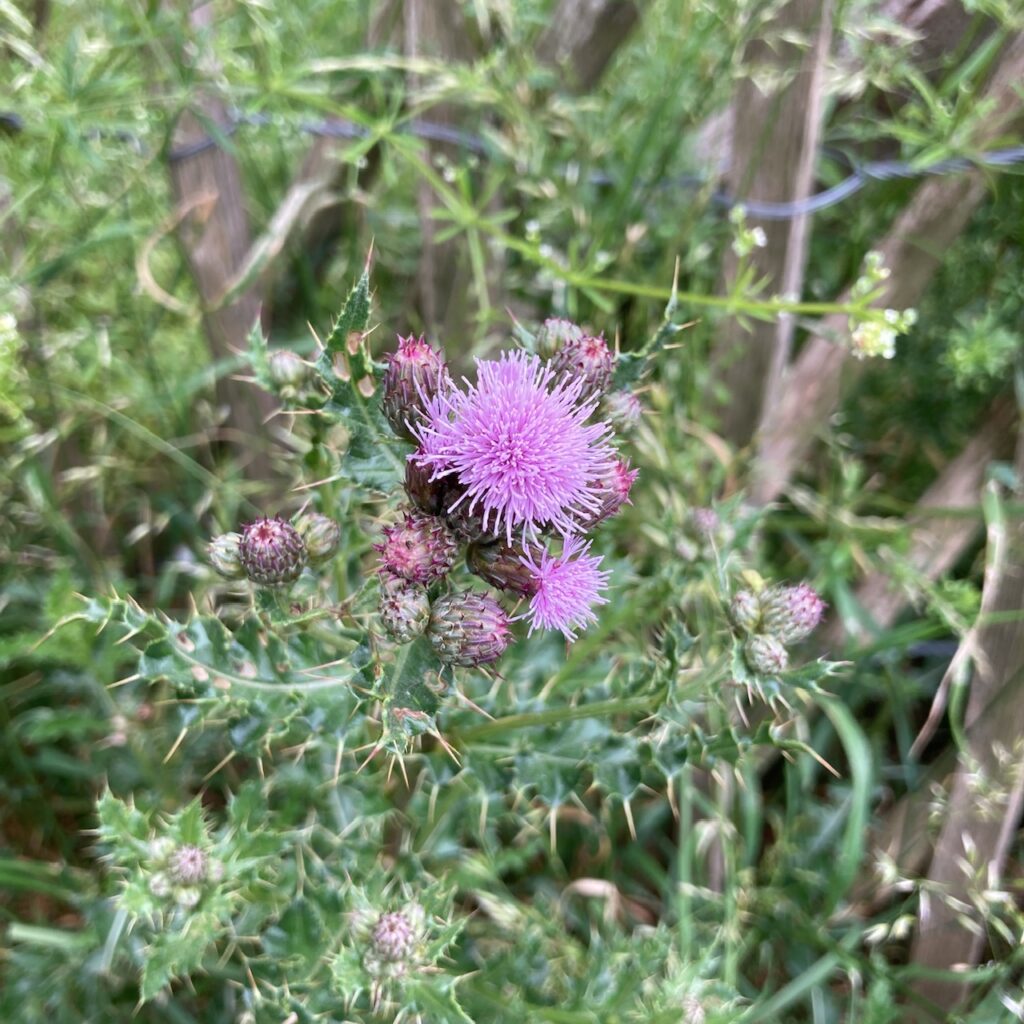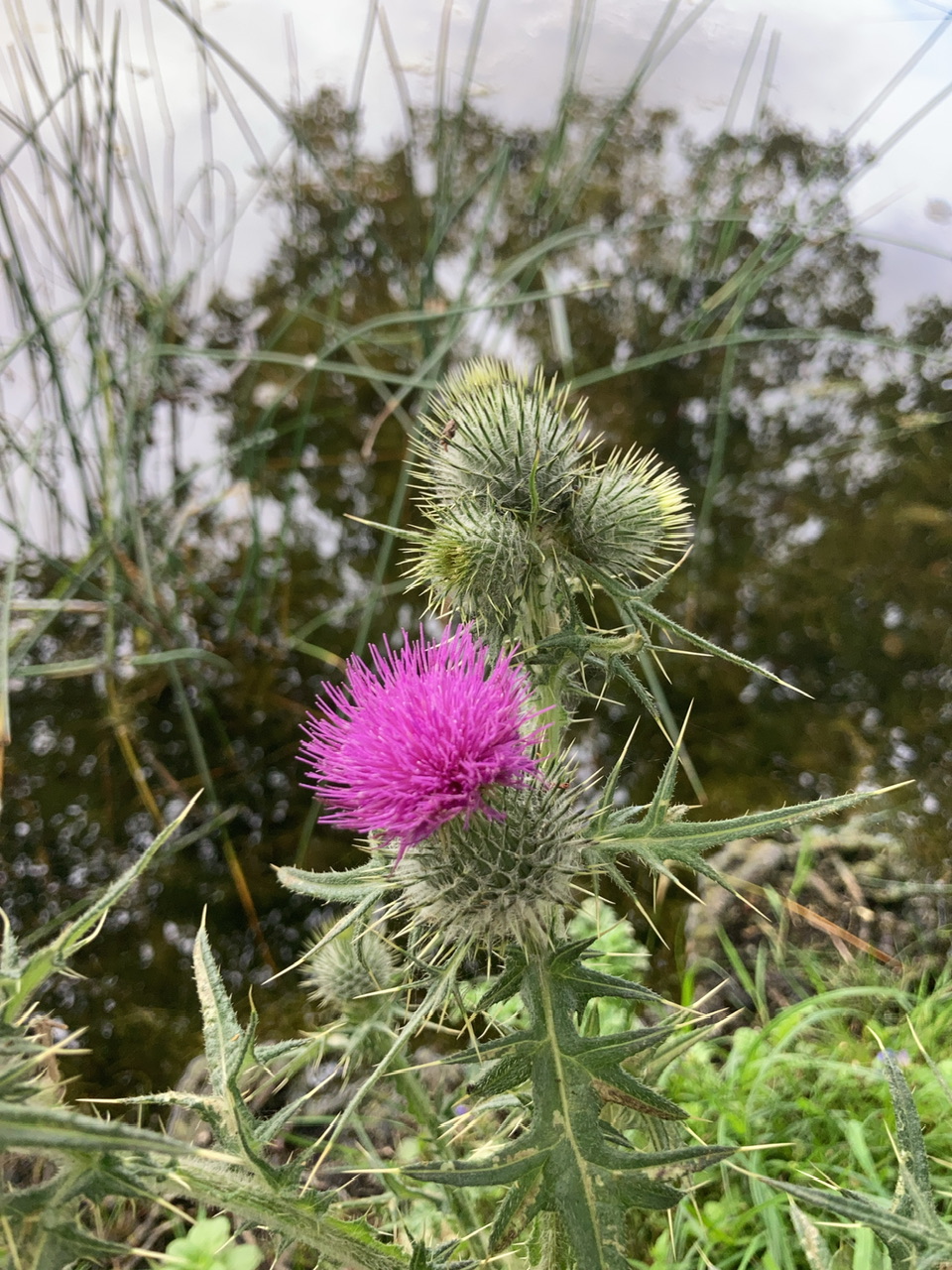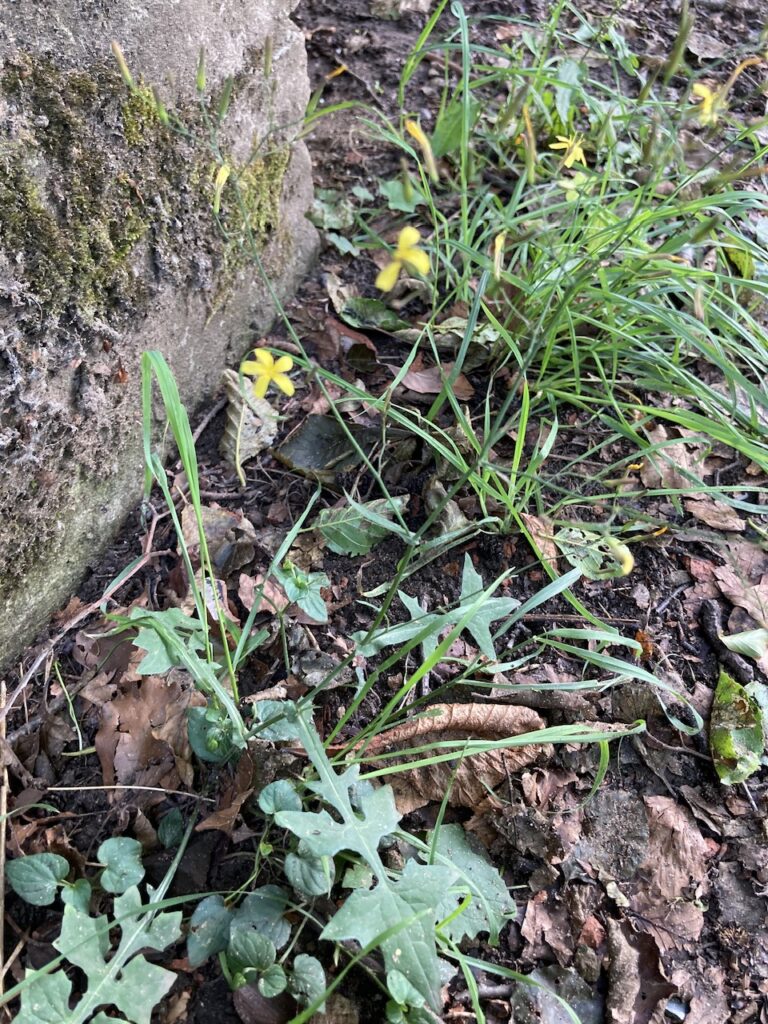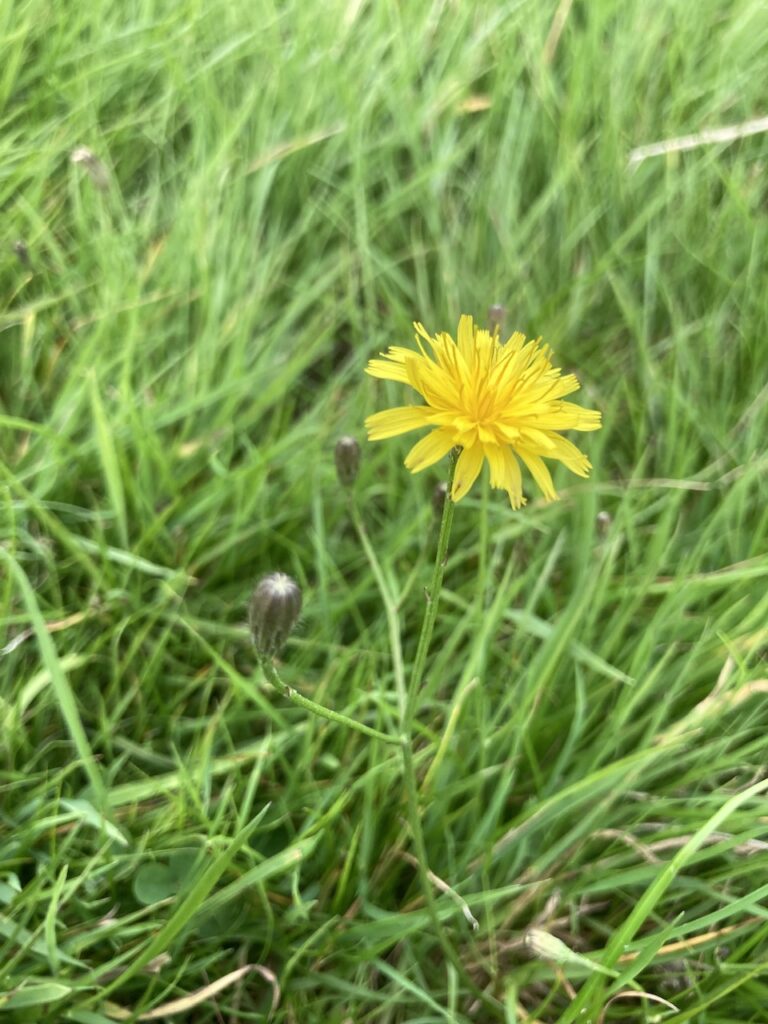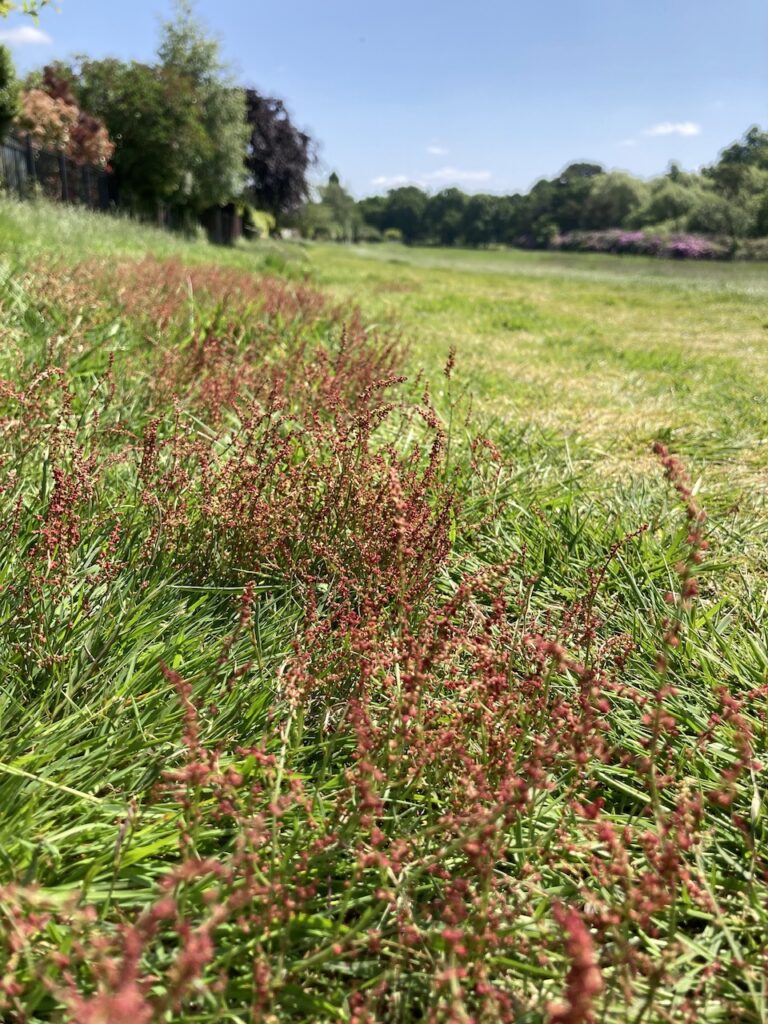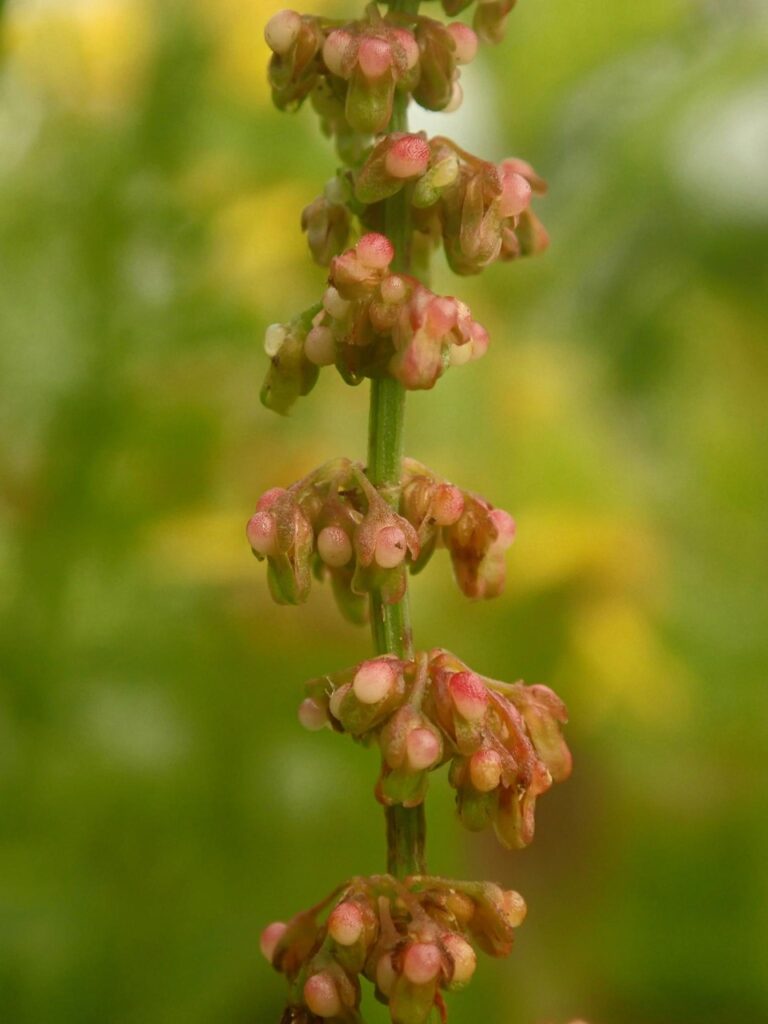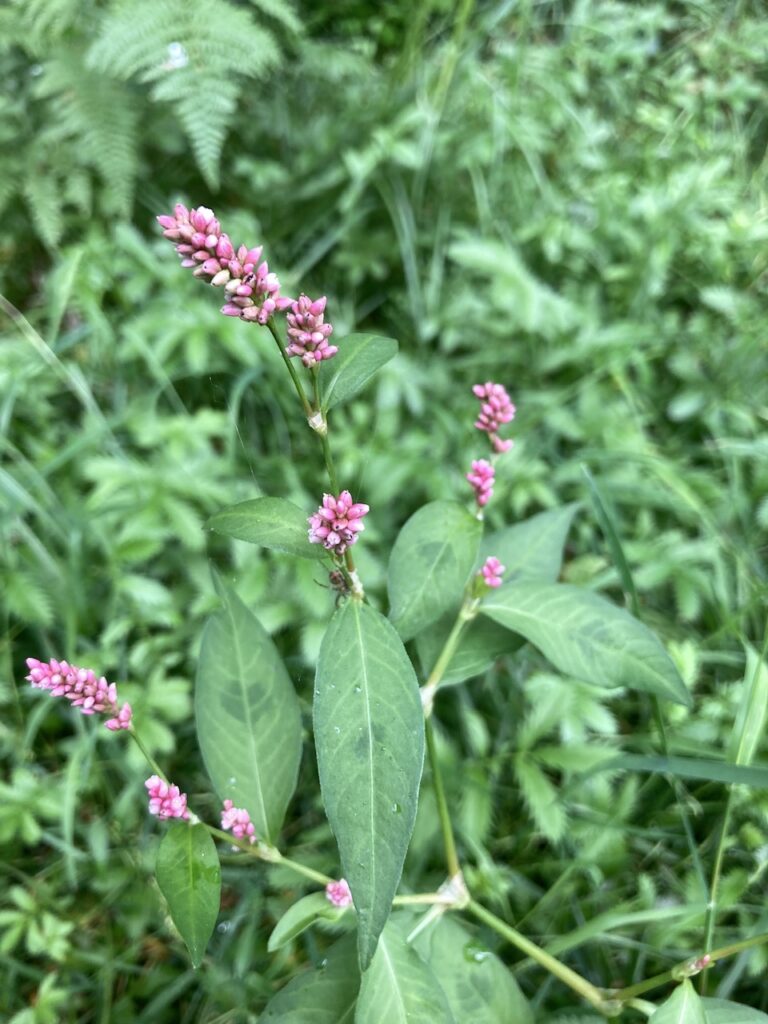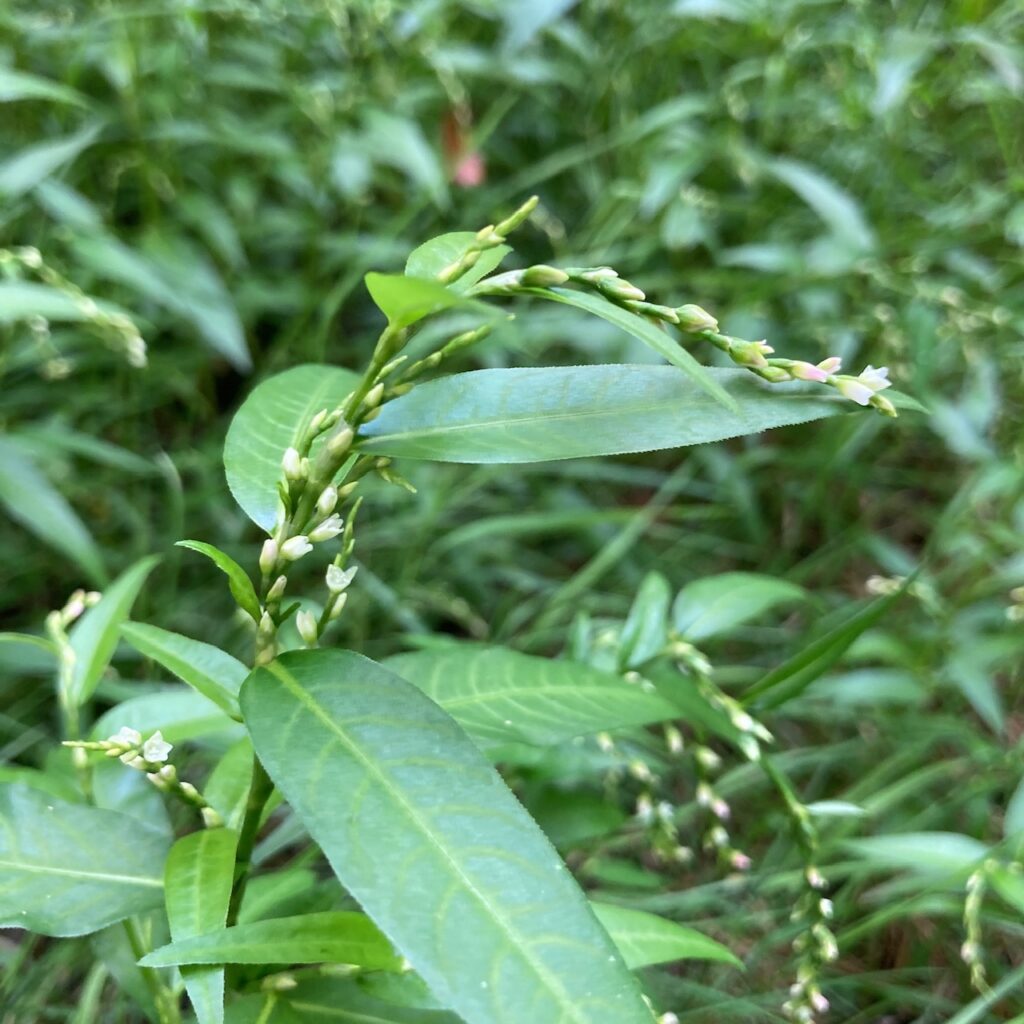Asterids are the largest group of flowering plants, with more than 80,000 species, about a third of the total flowering plant species.
On this page, we have the Asterales and Caryophyllaceae (Carnations and Knotweed) members of the Asterid group.
We have more Asterids on the Carrots, Nettles, Figwort and More… page.
Carnation / Pink Family
Common Mouse-ear

Cerastium fontanum.
Common Mouse-ear is a low-growing perennial plant with hairy leaves. It produces small white flowers with notched petals. Commonly found in lawns, gardens, and disturbed areas, it spreads quickly and forms dense mats. It is known for its resilience and adaptability to different soil conditions.
Dianthus
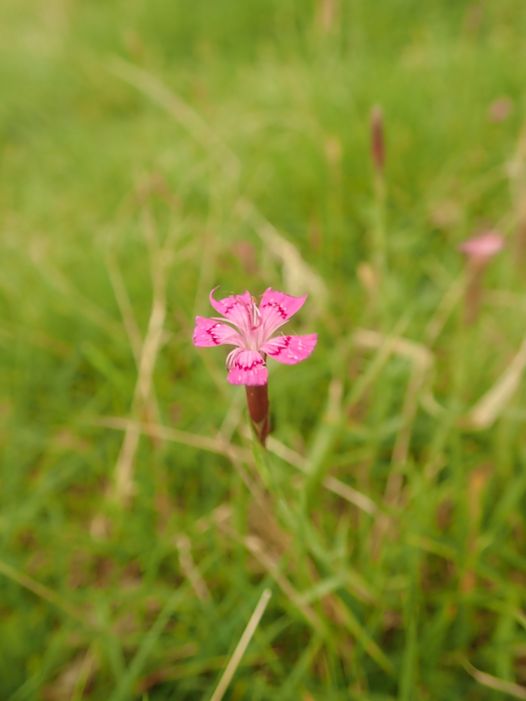
Dianthus
Dianthus, are a genus of about 340 flowering plants native to Europe, Asia, and North Africa. They are characterised by their small, fragrant flowers that come in a wide variety of colours, including white, pink, red, yellow, and purple. Dianthus are also known for their delicate and feathery foliage.
(Normally cultivated, rare as a wild plant)
Lesser Stitchwort
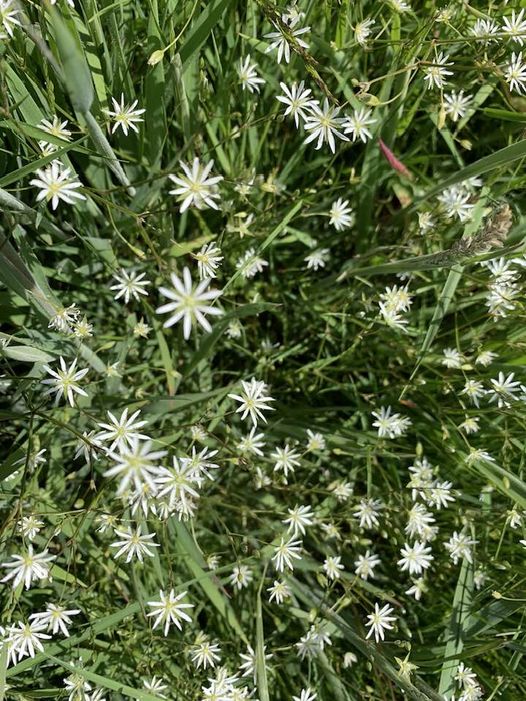
Stellaria graminea.
Lesser stitchwort is a herbaceous perennial plant. It has narrow, grass-like leaves and delicate white flowers. Lesser stitchwort is commonly found in meadows, woodland edges, and grassy areas.
White Campion

Silene latifolia.
White campion is a wildflower that has white flowers with five petals, each deeply notched and almost divided into two. The flowers are surrounded by a balloon-like, white or green-veined calyx. The leaves are hairy, thin, and lanceolate-shaped. White campion blooms from spring to autumn and is pollinated by moths.
Aster / Daisy Family
Daisy
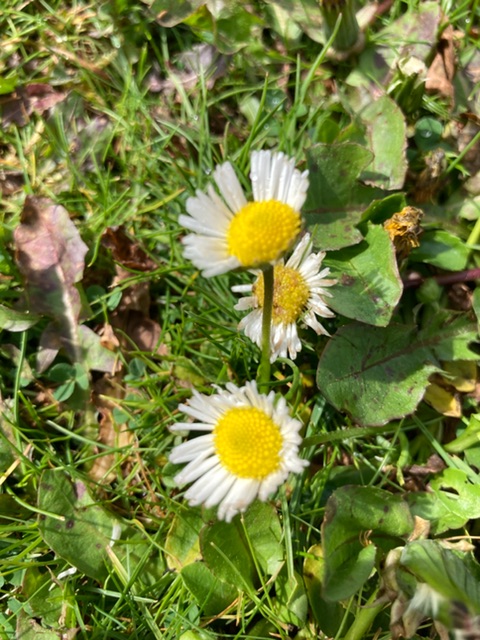
Bellis perennis.
White flowers with yellow centres, leaves spoon-shaped with toothed margins.
Red Daisy
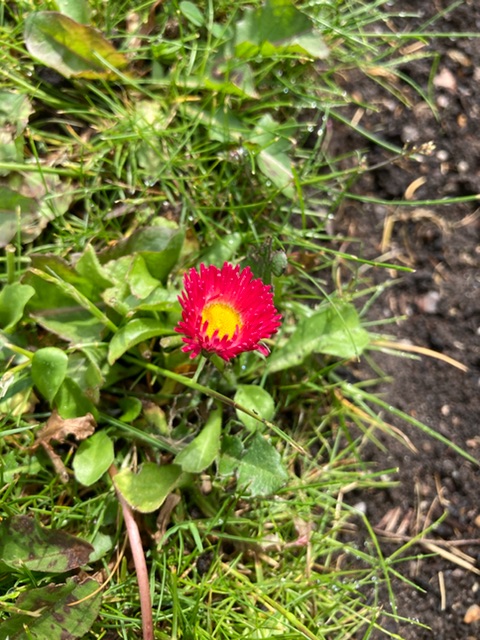
Bellis perennis.
Red flowers with yellow centres, leaves are narrow and divided.
Oxeye Daisy

Leucanthemum vulgare.
The oxeye daisy has a single, erect stem that is topped with a single flower head. The flower head has a white centre surrounded by white ray petals. The ray petals are actually modified leaves that have become fused together. The centre of the flower head is made up of many small, yellow disc flowers.
Sow Thistle
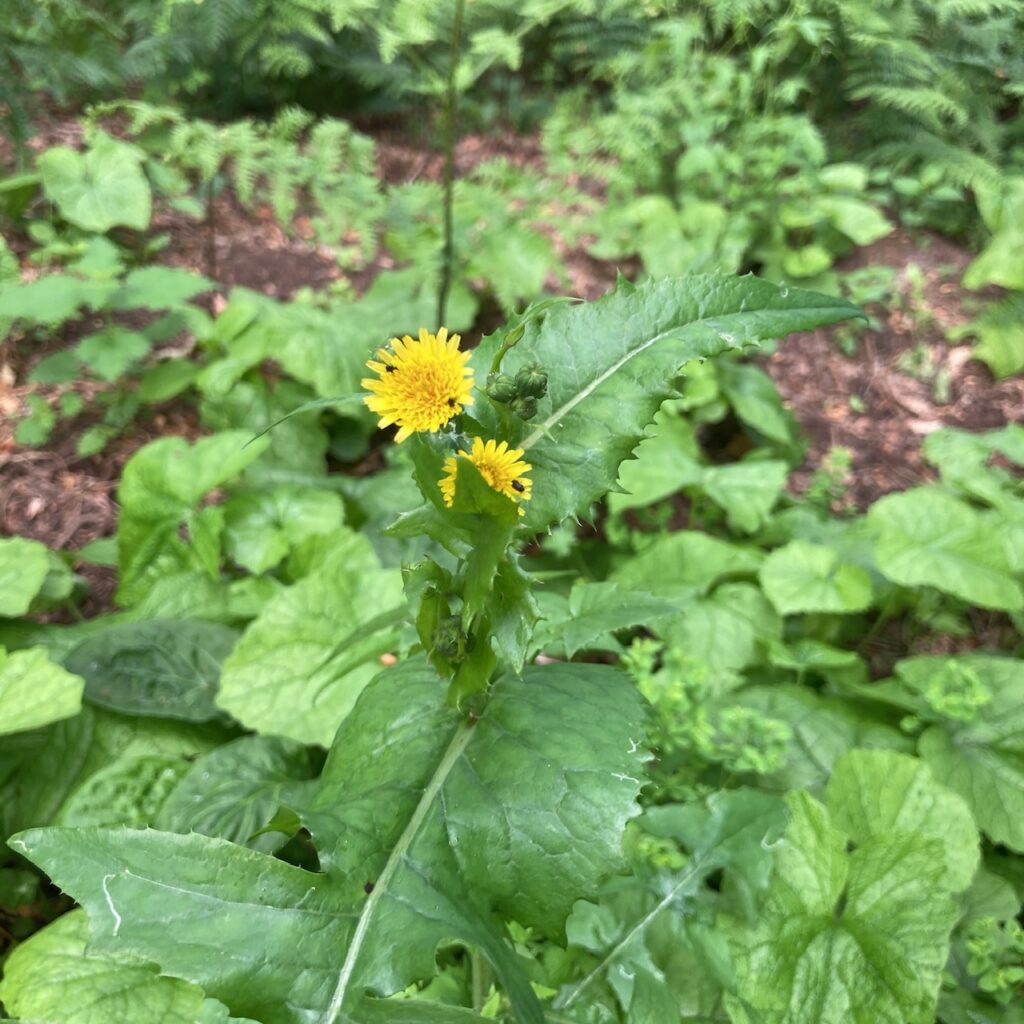
Sonchus.
The flowers are yellow and arranged in a head, with the individual florets surrounded by bracts. The fruits are achenes, which are small, dry, one-seeded fruits.
Yarrow

Achillea millefolium.
The Yarrow flower is a perennial herb. It has a long, slender stem. The leaves are feathery and divided into many small leaflets. The flowers are small and white or yellow, and they are arranged in flat-topped clusters.
Greater Burdock
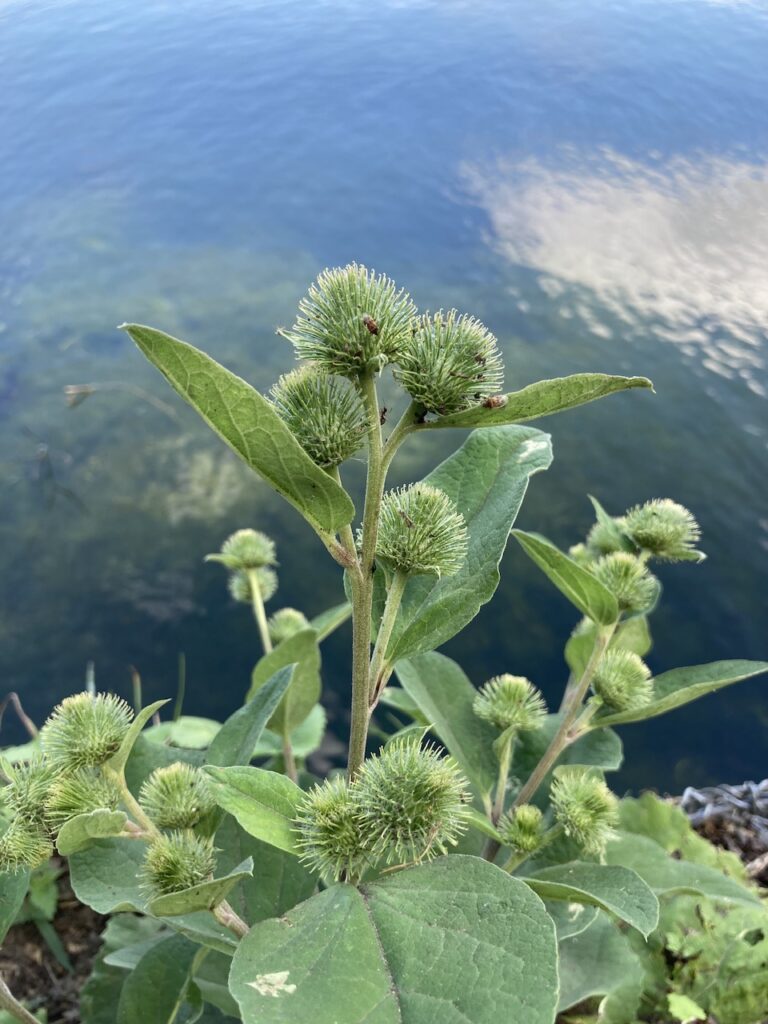
Arctium lappa.
Burdock is a biennial plant that grows up to 3 meters tall. It has large, heart-shaped leaves that are covered in woolly hairs on the underside. The flowers are purple and clustered together in round heads. The fruits are burrs that have hooked spines, which allow them to attach to clothing or animal fur and be carried long distances.
Nipplewort
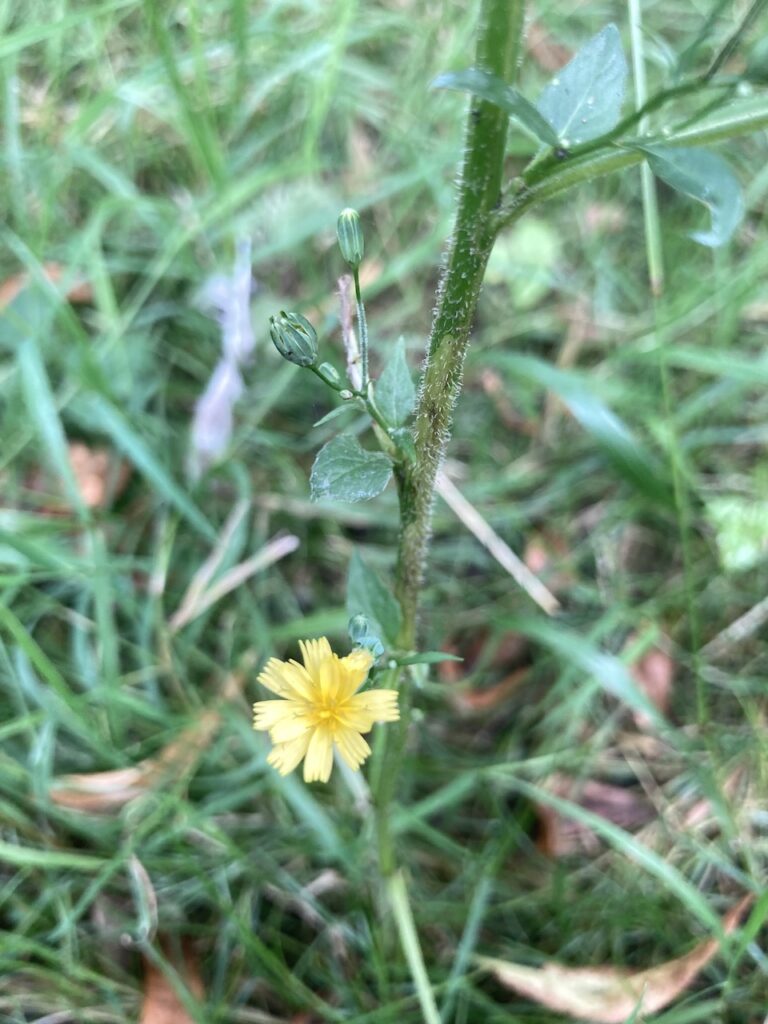
Lapsana communis.
The Nipplewort is an erect, hairless or glandular-hairy plant with milky sap, growing up to 1.5 meters tall. The leaves are alternate, ovate to sub-rotund, shallowly and toothed. The flowers are arranged in groups of 5-25 with 8-15 ray florets each, 5-toothed tips, and bloom from June to September.
Common Ragwort
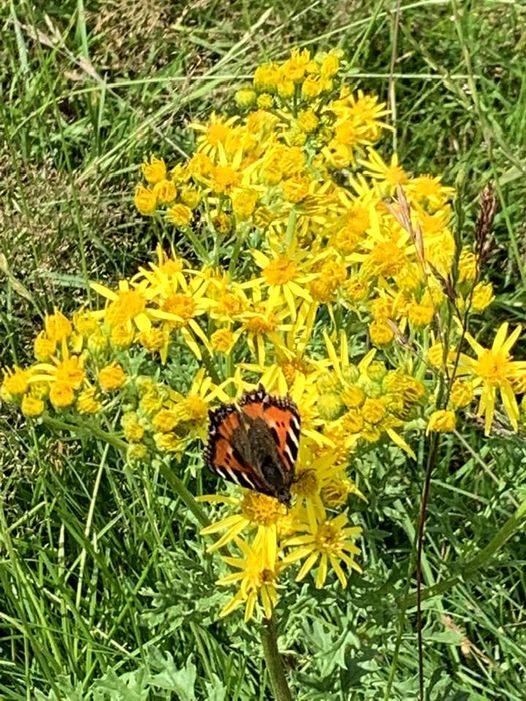
Senecio jacobaea.
Common ragwort is a tall, yellow-flowered plant found in meadows and pastures. It has deeply lobed leaves and clusters of daisy-like flowers. While it may look beautiful, ragwort can be toxic to livestock when consumed. It plays a role in supporting biodiversity by providing a habitat for certain butterflies.
Cat’s-ear

Hypochaeris radicata.
Cat’s-ear and Autumn Hawkbit are very similar and hard to tell apart.
The flowerhead is not tapered at the base but narrows abruptly into the stem.
Dandelion

Taraxacum officinale.
Dandelion is a perennial herbaceous plant with a distinctive yellow flower head and a cluster of fluffy seeds called “blowballs.” It is widespread in lawns, fields, and disturbed areas. Dandelions have culinary and medicinal uses and are known for their tenacious nature and deep taproot.
Lesser Hawkbit

Leontodin saxatilis.
Flowers are larger than Autumn Hawkbit.
Single flower per stem.
Leaves are hairy.
Hawkweed
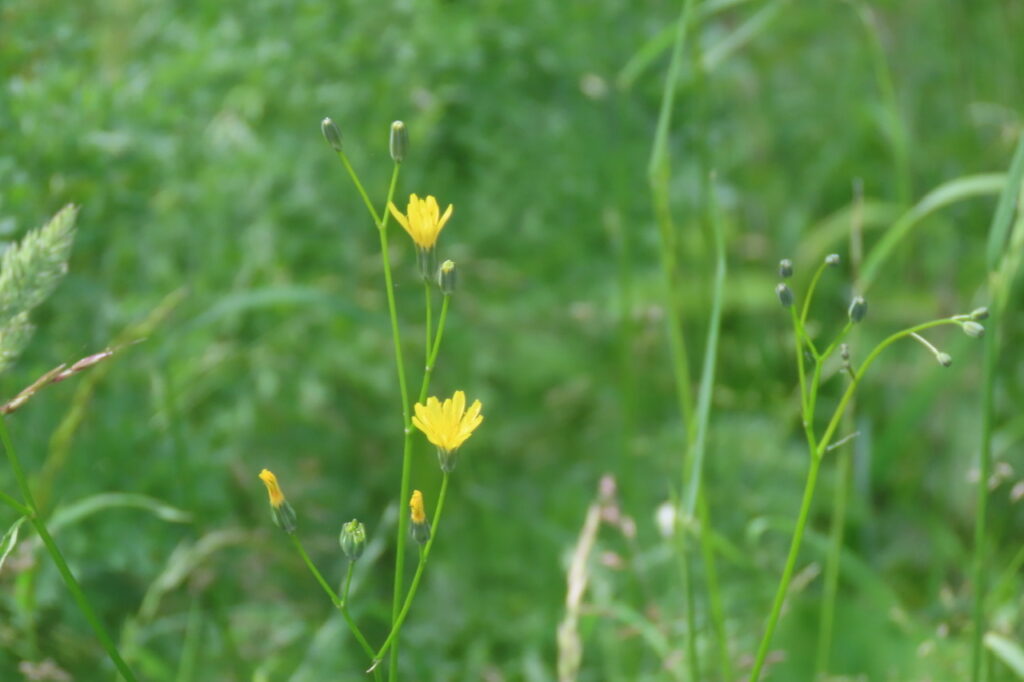
Hieracium.
Hawkweed is a genus of flowering plants with over 1,000 species known for their yellow flowers and hairy leaves.
Hawkweed typically has a taller stem and more hairy leaves than Cat’s Ears. Additionally, hawkweed flowers are arranged in a cluster at the top of the stem, while cat’s ears flowers are typically solitary.
Dock Family
Broad-leaved Dock

Rumex obtusifolius.
Dock is a common name for a variety of plants in the genus Rumex.
The edges of the Broad-leaved Doc wavy and the upper surface is hairless.
Knotgrass
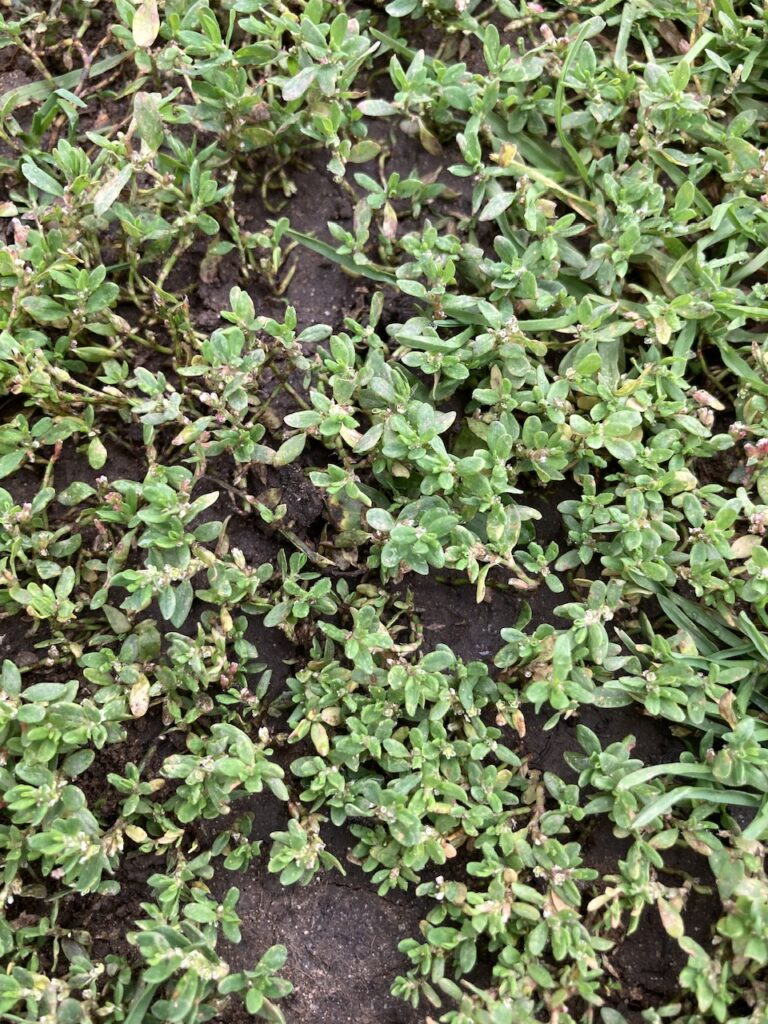
Polygonum aviculare.
Covers bare soil and open ground at a very low level. Pale pink flowers June to October.
Photographs used on these Wildflower pages were taken in Wollaton Park and are reproduced with the original artist’s permission.
Credits: Colin Robbins, Gila Taylor, Chris Golightly, Kiyoko Naish, Michael Hayes, Unni Williams, Kyle Heesom, Wendy Martin.
Copyright © for each picture remains with the original artist, who is duly acknowledged and credited for each image.

